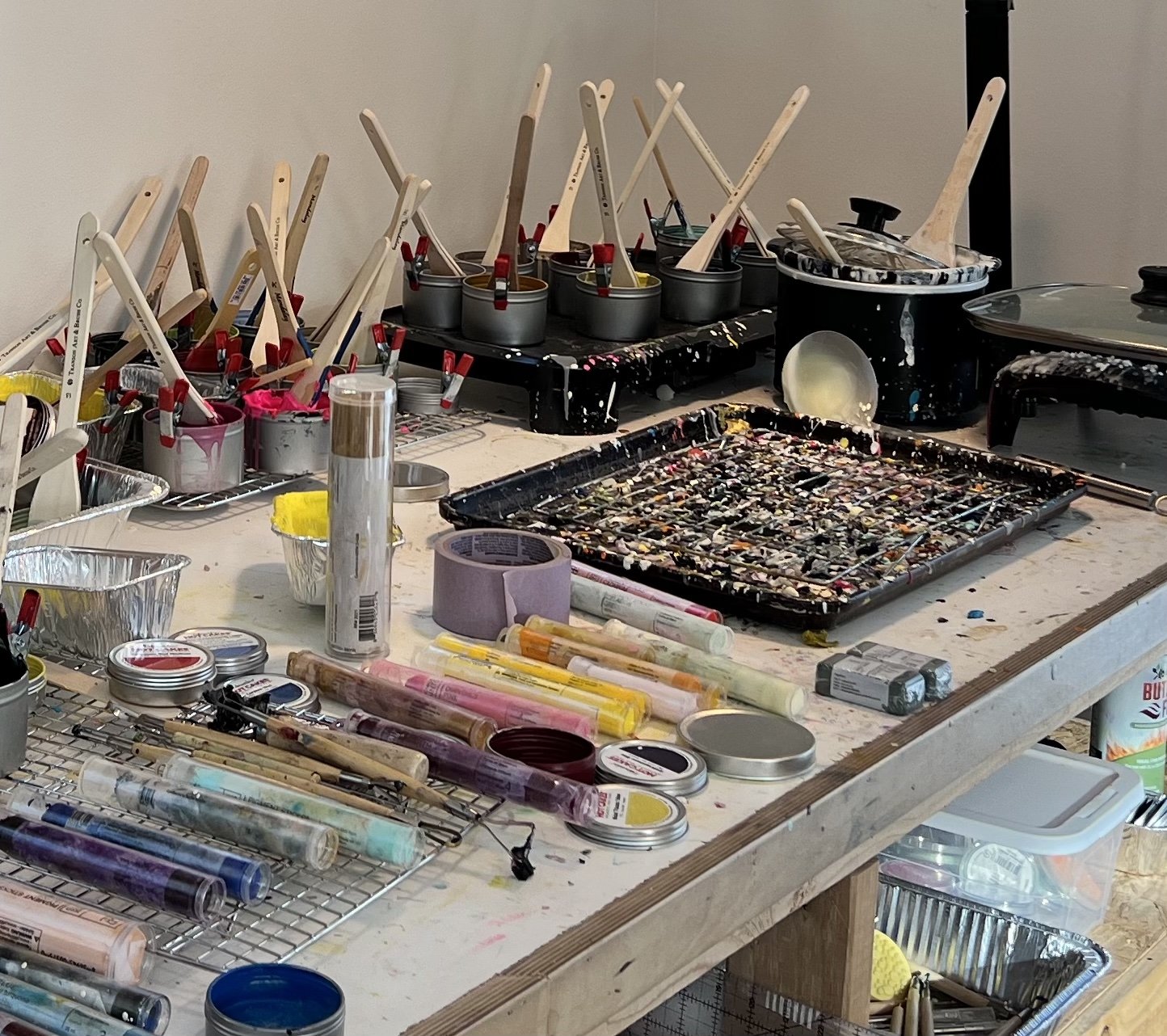
What is encaustic?
Encaustic is a Greek word meaning “to heat or burn in” (enkaustikos). Heat is used throughout the process, from melting the beeswax and varnish to fusing the layers of wax. Encaustic consists of natural bees wax and dammar resin (crystallized tree sap). The medium can be used alone for its transparency or adhesive qualities or used pigmented. Pigments may be added to the medium, or purchased colored with traditional artist pigments. The medium is melted and applied with a brush or any tool the artist wishes to create from. Each layer is then reheated to fuse it to the previous layer. (Source: The Encaustic Institute)
Artist Statement
I have been making art for as long as I can remember. Growing up, every Christmas I would get the same art set in a foldable, vinyl case—filled with tempura paints, watercolors, markers, and colored pencils. It was always my favorite present (except for the year I got Fashion Plates—who's with me?)
After decades as an entrepreneur—My businesses have been written up in Oprah magazine and distributed worldwide to independent and chain retailers, including REI—I am thrilled to be making art again out of The Wee Studio in Boulder, Colorado.
I love the colors, the fluidity and the process of encaustic. It requires a level of patience that I find very grounding. I love playing with color, texture, and whimsical text. I love the organic emergence of shapes and colors—it’s like a type of magic. My art is a process of discovery, and through it I feel connected to humanity and the world, with our collective quirks, idiosyncrasies, humor, beauty, and longing.
Care of encaustic
Encaustic is extremely archival, but as with any fine art, care should be given to encaustic artwork. There should be no fear of the work melting in normal household conditions. The wax and resin will not melt unless exposed to temperatures over 150 degrees Fahrenheit. Leaving a painting in a car on a hot day would not be advisable or hanging a painting in front of a window with direct desert-like sun. Encaustic is also sensitive to freezing cold temperatures, which can cause the wax to become brittle and much more susceptible to cracking or chipping.
Some encaustic colors tend to “bloom” or become cloudy over time. If your painting appears indistinct, simply rub the surface with a soft cloth or nylon stocking. Over time the surface retains its gloss as the wax medium continues to cure and harden for up to 1-3 years. (Source: The Encaustic Institute)